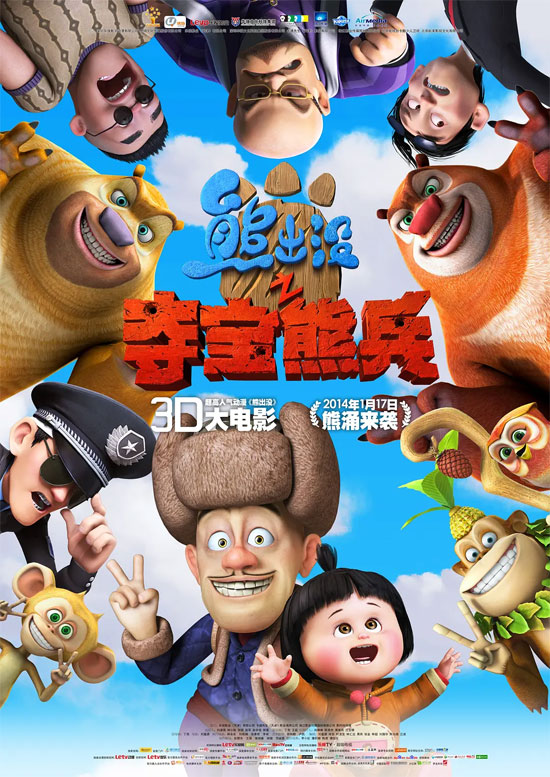Film Name: 熊出没之夺宝熊兵 / Boonie Bears: To the Rescue

Although “Boonie Bears: To the Rescue” bears the hallmarks of numerous classic Hollywood animations—such as the little girl’s introduction strongly resembling the human foundling who arrives in the animal world in “Ice Age 1,” or the character of the wheelchair-bound grandfather whose square face clearly mimics Carl Fredricksen, the balloon salesman from “Up”— we must still give this film high praise—it genuinely crafts a compelling story.
This praise is particularly noteworthy given two significant contexts. First, since late August, the Boonie Bears TV series has been embroiled in controversy over excessive verbal and physical violence, drawing intense media scrutiny. I previously criticized its reliance on prank culture and lowbrow humor to attract children’s attention, yet it remains under close observation for its film content. Second, this year’s “Boonie Bears” feature film is the series’ debut animated movie. Compared to franchises with two, three, or even five to six installments, its ability to craft such a story despite having zero cinematic experience far exceeded my expectations. This genuinely offers hope for Chinese animated filmmaking—starting from imitation, combining internationally recognized elements with our own characters and brand, we can indeed create works with global appeal.
Of course, the film does contain some questionable content, such as the presence of firearms (though mostly water guns), fireworks aimed at people (highly imitable by children during the Lunar New Year season), and the scenes where Xiong Da and Xiong Er rummage through items while sneaking into Strong’s home. Although the “stinky bears” from the TV series have been rebranded as “little bears” in the film, significant safety concerns remain unaddressed.
I believe this story succeeds, most importantly because it delivers a masterstroke: revealing that the “treasure” Grandpa left in the safe for the orphanage girl was actually an emotional bond. Without this element, the entire film would remain confined to playful banter and slapstick. It is this familial affection that elevates the film, giving it deeper meaning.
Regrettably, the grandfather’s selfish and money-grubbing son—the one who most deserved this treasure—ultimately did not receive it. Though I believe every viewer was undoubtedly moved when they saw the grandfather cherishing the childhood photo of himself and his son, the director did not grant this “villain” a chance for redemption. To emphasize the selfless love of the two bears and Strongman for the little girl, the film forcibly takes away the treasure the old man left for her—a treasure that was also meant for his son.
This leaves me pondering: What exactly does the “treasure” in “Boonie Bears” represent? If it symbolizes the innocent little girl, seized by an unrelated villain, then reclaiming it seems justified. But if it represents familial affection or a chance for redemption for someone who erred, isn’t reclaiming it a bit cruel?
At its core, “Boonie Bears” is a male-centric film. It not only lacks female characters but also the feminine qualities they embody—harmony, compromise, and tolerance. What appears as righteous “treasure retrieval” is, in essence, a blatant act of plunder driven by male instinct. From my perspective, a more satisfying conclusion might have been if the son had shown genuine remorse by the end.
Please specify:Anime Phone Cases » Boonie Bears: To the Rescue 2014 Animation Film Review: The one most deserving of the treasure did not receive it.